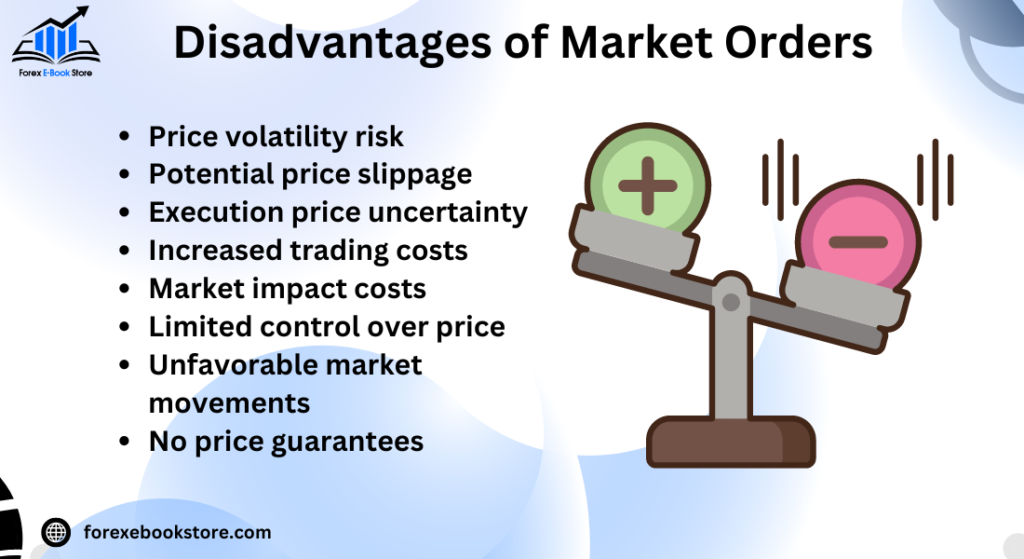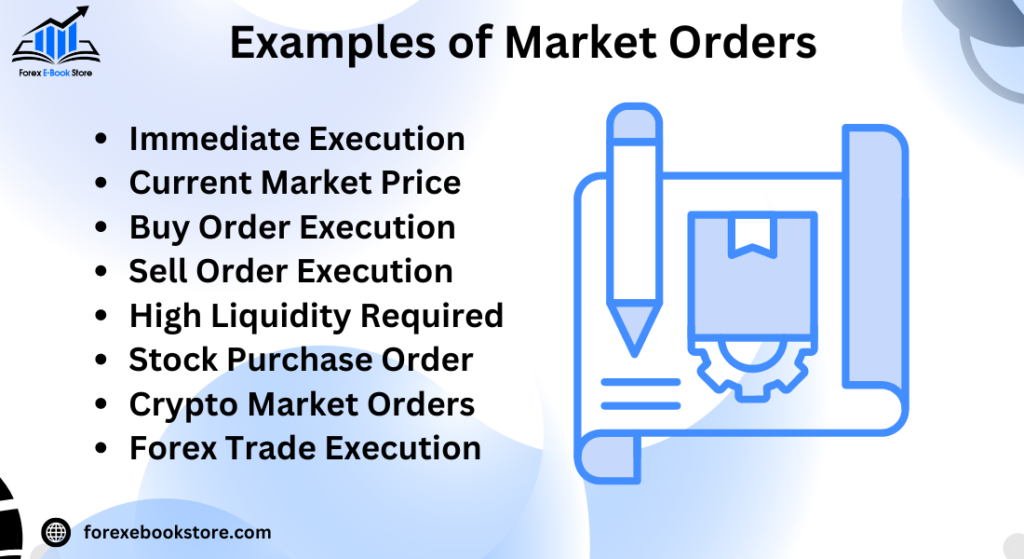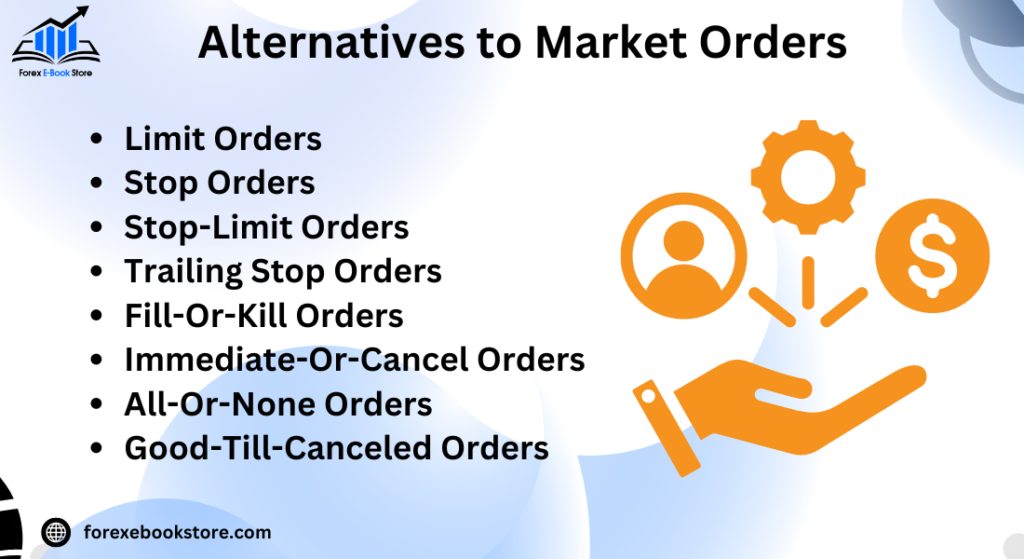A market order is one of the most straightforward and widely used types of orders in the world of stock trading. When an investor places a market order, they are instructing their broker to execute the purchase or sale of a stock or other security immediately at the current available price. This type of order is typically used by investors who prioritize the speed of execution over the exact price of the transaction.
Market orders are favoured for their simplicity and efficiency, especially in highly liquid markets where the bid-ask spread is narrow. However, they do come with certain risks, particularly in volatile markets where prices can fluctuate rapidly. Understanding the nuances of market orders and how they compare to other order types, like limit orders, is essential for investors aiming to optimize their trading strategies.
Table of Contents
How Does a Market Order Work?
A market order functions as a directive to buy or sell a security immediately at the current market price. When an investor places a market order, they are not setting a specific price for the transaction but rather instructing their broker to execute the trade as quickly as possible. This type of order is commonly used when the investor prioritizes the speed of execution over the price, making it ideal for highly liquid assets like large-cap stocks and popular ETFs.
Upon receiving a market order, the broker will execute the trade at the next available price. If the market is open, this usually means the trade is completed within seconds. However, it’s important to note that the price at which the order is fulfilled may differ slightly from the last quoted price, especially in fast-moving markets. This difference occurs because the market price can fluctuate between the time the order is placed and when it is actually executed.
In essence, an order guarantees that the trade will be executed, but it does not guarantee the price. This is why they are typically used for assets with high liquidity, where the difference between the bid and ask prices (the bid-ask spread) is minimal. Investors should be cautious when using it in less liquid markets or with highly volatile securities, as the final execution price could vary significantly from the expected price.
What are the Advantages of Market Orders?
Market orders offer several distinct advantages that make them a popular choice for many investors. One of the primary benefits is the speed of execution. Since thses orders are designed to be filled immediately at the best available price, they are ideal for situations where getting into or out of a position quickly is more important than the specific price at which the trade is executed. This is particularly beneficial in markets that are highly liquid, such as those for large-cap stocks, where the bid-ask spread is usually very narrow.
Another advantage of these orders is their simplicity. For novice investors or those who prefer a straightforward approach to trading, market orders provide an easy way to buy or sell securities without the need to monitor prices continuously. This can reduce the complexity of trading and allow investors to focus on broader strategies rather than getting bogged down in the minutiae of price movements.
Additionally, market orders are less likely to result in partial fills compared to limit orders. A partial fill occurs when only a portion of an order is executed at the desired price. Because these orders are filled at the best available price, they are usually completed in full, which ensures that the investor’s entire position is executed as intended.
What are the Disadvantages of Market Orders?

Despite their advantages, market orders also have some notable disadvantages. One significant drawback is the lack of price control. When placing a this order, an investor agrees to buy or sell a security at whatever price is available at the time of execution. This can be problematic in volatile markets where prices can change rapidly, potentially leading to a less favorable execution price than anticipated. For example, in a fast-moving market, the final price of a security could be significantly higher or lower than the last traded price.
Another disadvantage of order of market is their potential impact on price slippage. Price slippage occurs when the actual execution price differs from the expected price due to market fluctuations. This is more likely to happen in thinly traded markets or with illiquid securities where there are fewer buyers and sellers, leading to wider bid-ask spreads. In such cases, the execution price of this order could deviate significantly from the last quoted price, resulting in unexpected costs for the investor.
Lastly, while markets orders ensure that a trade is executed, they may not always be the best choice for all investors, particularly those who are sensitive to price. In situations where price precision is crucial, such as with highly volatile or low-liquidity stocks, a limit order may be more appropriate, allowing the investor to specify the maximum or minimum price they are willing to accept for the trade.
When Should You Use a Market Order?
Markets orders are best used in situations where the speed of execution is more critical than the specific price at which the trade is executed. For example, if you are trading highly liquid assets such as large-cap stocks or widely-traded ETFs, an order is an appropriate choice. In these scenarios, the bid-ask spread is usually narrow, meaning the difference between the buying and selling prices is small, reducing the risk of significant price slippage.
Another situation where market orders are useful is when you need to quickly enter or exit a position, particularly in rapidly changing markets. This could be during times of market volatility when prices are moving quickly, and waiting for a specific price might result in missing the opportunity altogether. These orders are also beneficial for investors who are implementing strategies such as dollar-cost averaging, where the primary goal is to invest regularly over time, rather than timing the market.
However, investors should avoid using market orders in markets with low liquidity or when trading highly volatile securities. In these cases, the price at which the order is executed can vary significantly from the expected price, leading to unexpected outcomes. For such scenarios, limit orders may be more suitable, as they allow the investor to set a specific price at which they are willing to buy or sell, providing greater control over the execution.
How is a Market Order Different from a Limit Order?
A market order and a limit order are both common types of stock trading orders, but they serve different purposes and have distinct characteristics. An order market is executed immediately at the best available current price, which means that the focus is on the speed of the transaction rather than the price. This type of order guarantees that the trade will be completed, but it does not guarantee the price at which the trade will occur.
In contrast, a limit order gives the investor control over the price at which the trade will be executed. When placing a limit order, the investor sets a specific price threshold: the trade will only be executed at this price or better. For example, if you place a buy limit order at $50, the order will only be fulfilled if the stock can be purchased at $50 or less. This ensures that the investor does not pay more than they are willing to for the stock, but it also means that the order might not be executed if the market price does not reach the desired level.
The key difference lies in the trade-off between certainty and price. With a market order, the certainty of execution is high, but the final price is uncertain. With a limit order, the price is certain (within the specified limits), but there is a risk that the order will not be executed if the market does not reach the set price. Understanding these differences helps investors choose the right type of order based on their trading goals and market conditions.
What are Examples of Market Orders?

Market orders are commonly used by investors who prioritize quick execution over price precision. For instance, consider an investor who is confident about the growth potential of a company and wants to buy shares as soon as possible. They might place a market order to purchase 100 shares of this company’s stock, knowing that the order will be filled immediately at the current market price. This ensures that they enter the position without delay, even if the price fluctuates slightly during execution.
Another example of a market order occurs in the context of selling. Suppose an investor holds a significant amount of a stock that they believe is about to decline in value. To avoid losses, they might place a market order to sell their shares quickly. This allows them to liquidate their position almost instantaneously, regardless of the exact selling price. In this scenario, the priority is to exit the market swiftly to prevent further losses, making a market order the most suitable choice.
Market orders are also used by institutional investors or during events that cause market-wide movements, such as earnings announcements or economic reports. In these situations, the ability to quickly enter or exit a position can be crucial, and the flexibility of a market order can provide the necessary speed to react to market changes.
What Factors Can Affect the Execution of a Market Order?
Several factors can influence the execution of a market order, including the liquidity of the asset, market volatility, and the time of order placement. Liquidity is a critical factor; highly liquid stocks, such as large-cap stocks or ETFs, are traded frequently with narrow bid-ask spreads. In these cases, market orders are usually executed quickly and at a price close to the last quoted price. However, for less liquid assets, such as small-cap stocks or thinly traded securities, the bid-ask spread can be wider, and the execution price may vary more significantly from the expected price.
Market volatility also plays a significant role in the execution of market orders. During periods of high volatility, prices can change rapidly, even within seconds. This means that the price at which a market order is executed could be quite different from the price seen when the order was placed. This is particularly relevant during market openings or after major news events when prices are more likely to fluctuate dramatically.
The time of day when the order is placed can also affect its execution. Orders placed during regular trading hours typically have more predictable outcomes, but those placed during pre-market or after-hours sessions might face different market conditions. Liquidity is generally lower during these times, leading to wider bid-ask spreads and more significant price variations, which can impact the execution price of a market order.
How Do Market Orders Impact Trading in Volatile Markets?
In volatile markets, where prices can change rapidly, market orders can lead to execution at unexpected prices. When an investor places a market order during periods of high volatility, the price at which the order is executed may differ significantly from the last quoted price due to the rapid fluctuations in the market. This is because a market order prioritizes speed over price, meaning it will be executed at the best available price at the time of processing, which might be higher or lower than anticipated.
For example, if a stock is experiencing high volatility due to an earnings report or market-wide events, a market order to buy or sell could be executed at a price that is substantially different from what the investor expected. This can lead to unintended financial outcomes, particularly in fast-moving markets where the difference between the expected and actual execution price (known as slippage) can be large.
To mitigate the risks associated with using market orders in volatile markets, some investors opt for limit orders instead. A limit order allows the investor to set a specific price at which the trade will be executed, providing more control over the transaction. However, the trade-off is that the order may not be executed if the market price does not reach the set limit, which could result in missed opportunities during rapid price movements.
What are the Alternatives to Market Orders?

While market orders are the simplest and most commonly used type of trade, there are several alternatives that offer more control over the execution price. One such alternative is a limit order, which allows the investor to specify the maximum or minimum price at which they are willing to buy or sell a security. Limit orders are particularly useful in volatile markets or for trading less liquid assets, where controlling the execution price is critical. Unlike market orders, limit orders are not guaranteed to be executed, as they will only be filled if the market price reaches the specified limit.
Another alternative is a stop order, which becomes a market order once a specified price is reached. For example, a stop-loss order is placed below the current market price to sell a security if it drops to a certain level, thereby limiting potential losses. Conversely, a stop-buy order can be used to purchase a security if its price rises to a certain level, which might indicate a positive trend. While stop orders can help manage risk, they also carry the same execution risks as market orders once triggered.
Investors can also consider using trailing stop orders, which automatically adjust the stop price at a set percentage or dollar amount below the market price as the security’s price rises. This allows investors to lock in gains while providing some protection against downside risk. Like other stop orders, once the trailing stop is triggered, it converts to a market order and is subject to the same execution risks in volatile markets.
Conclusion
In conclusion, understanding what a market order is provides a foundational grasp of one of the most basic and commonly used trading mechanisms. Market orders prioritize speed, executing trades at the current market price, which is beneficial in highly liquid markets. However, they come with risks, especially in volatile or low-liquidity situations, where the final execution price may differ from expectations.
When considering different types of orders in Forex, the principles are similar, but the context and market dynamics may vary. Forex traders often use a variety of order types, such as limit orders and stop orders, to manage their trades more precisely in the fast-paced and volatile currency markets. Understanding these different order types and how they function in various markets can help investors make informed decisions, optimizing their trading strategies across both stock and forex markets. This interconnected knowledge base allows for better integration and application of trading principles, regardless of the asset being traded










